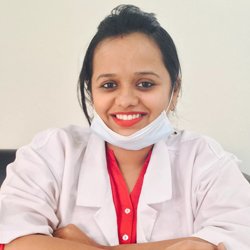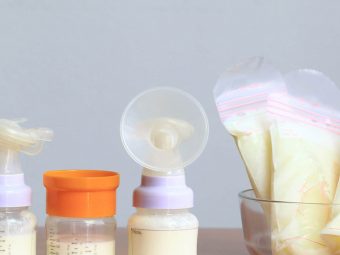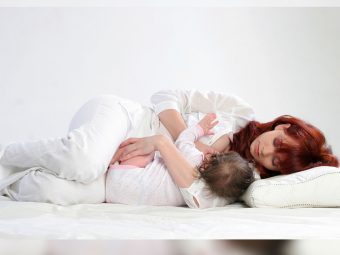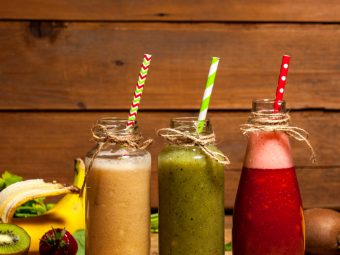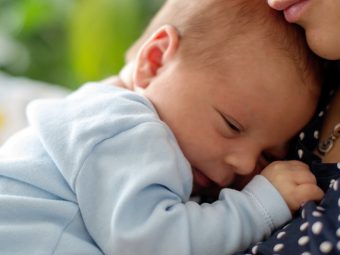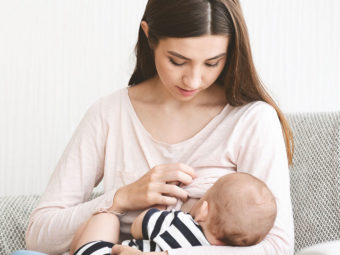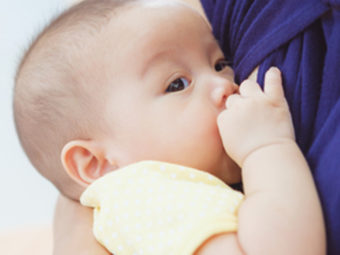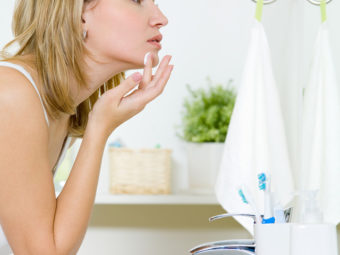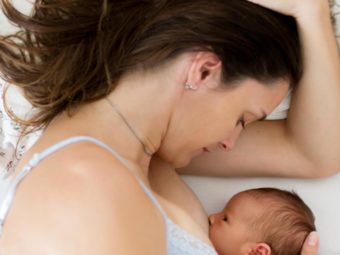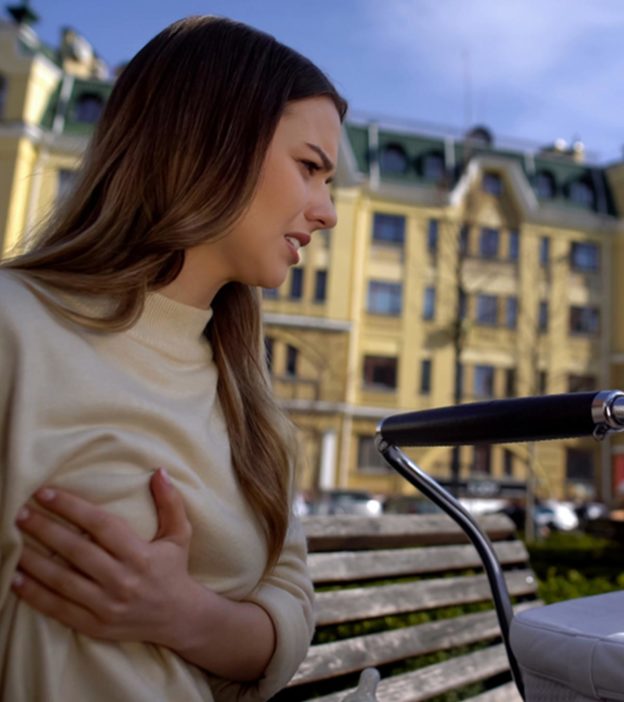
Image: Shutterstock
Candida is a yeast that commonly resides in our bodies, specifically in the skin, digestive tract, birth canal, and oral cavity. While healthy levels of candida may be beneficial, its overgrowth could lead to infections such as breast yeast infections(1).
Yeast infections often occur in warm, moist skin regions such as the underarms, private areas, and skin folds of the breasts and nipples(2). This type of yeast infection affecting the skin is known as cutaneous candidiasis. Fortunately, breast yeast infections can easily be treated and prevented with certain measures.
Read on to understand the causes, symptoms, treatments, and management of breast yeast infection and similar skin conditions.
What Are The Signs Of Yeast Infection Of The Breasts?
The lesions of a yeast infection of the breast have the following characteristics(2)(3).
- Bright red patches and rashes
- Redness or pustules around the rash
- One or more patches of different sizes and shapes
- Itching
- Stabbing or shooting pain at the rash
- Radiating burning sensation in one or both the breasts
如果你注意到这些症状,请教医生tor or a lactation consultant to confirm yeast infection and rule out other problems.
 Point to consider
Point to considerOther Skin Conditions With Similar Clinical Appearance
The following skin conditions may cause symptoms similar to those experienced in a yeast infection.
- Eczema
Image: IStock
- Skin allergy
- Contact dermatitis
- Seborrhea
- Psoriasis
- Cellulitis (bacterial skin infection)
A doctor can help you differentiate between these lesions with the help of necessary tools and tests.
Causes And Risk Factors Of Yeast Infection Of The Breasts
Fungal infections, including yeast infections, fundamentally occur when the fungus receives favorable conditions, such as a warm and moist environment, to thrive.Another leading cause is a poor immune response, often due to hampered immunity since the immune system keeps fungal growth in check.
The following are the commonly identified causes and risk factors of a yeast infection on the breasts(2)(3)(4)(5)(6).
- Poor hygiene
Image: IStock
- Tight clothing or synthetic clothes
- Ill-fitting shirts and bras
- Infrequent undergarment change
- Excessive sweating due to conditions, such as hyperhidrosis, or hot and humid weather
- Obesity
- History of vaginal yeast infection
- Type 2 diabetes
Image: Shutterstock
- Weak immune system
- Existing fungal infections
- Medications, such as steroids, antibiotics, and chemotherapy drugs
- Women with larger breasts may have more skin folds, causing more sweating under the breasts
A doctor diagnoses most cases of breast yeast infections through visual examination or laboratory examination of the nipple discharge. The doctor may scrape a part of the lesion and use the potassium hydroxide (KOH) preparation test to confirm the presence of fungus(7)but it is not always necessary to confirm yeast infection, usually, a physical exam will suffice.
Treatment For Yeast Infection Of The Breasts
The treatment of yeast infection depends on the location and severity of the infection. Topical applications of antifungal drugs as powders, creams, and solutions, are most commonly prescribed.
The following are the commonly used drugs for fungal infections(1).
- Miconazole
- Clotrimazole
- Oxiconazole
- Ketoconazole
- Econazole
- Ciclopirox
- Nystatin
- Fluconazole
Lactating mothers of exclusively breastfed infants may be prescribed lactation-safe oral antifungal medicines to prevent the risk of the baby ingesting the topical medication. You may also express and store the milk to feed your baby before applying a topical medicine on the breasts.
Maintenance of good hygiene is also essential to weaken and subdue the spread of the fungus. If fungal infection results from underlying conditions, such as a weak immune system or type 2 diabetes, the doctor may refer you to a relevant specialist. Correct management of the underlying risk factors accompanied by antifungal medication can cure yeast infection in three to four weeks.
Prevention Of Yeast Infection Of The Breasts
The following steps may help prevent yeast infection of the breasts.
- Maintain optimal hygiene
- Wash the skin under your breasts with soapy hot water during a shower
- Give breasts ample time to dry before wearing a bra
- Avoid wearing an ill-fitting bra that restricts airflow
Image: IStock
- Give yourself bra-free time at home whenever possible
- Wear clothes of breathy fabrics, such as cotton and linen
- Avoid wearing very tight clothes
- 不要在潮湿或出汗的衣服太久
- Change yourbreast padsfrequently
- Try to maintain your body weight in thehealthy BMI range
- Maintain your blood sugar levels if you have diabetes
- If you are on any medicines that suppress immunity, such as steroids, ask your doctor if you need preventive antifungal medications
 Quick tip
Quick tipHow Is Thrush Different From Yeast Infection Of The Breasts?
Thrush is also caused by the candida albicans, which is a type of yeast fungi. However, thrush indicates the oral cavity is involved and may cause symptoms such as white patches and inflammation.Yeast infection of the breasts may spread through the nipple to cause oral thrush in your infant, especially if a breastfeeding mother is experiencing soreness or cracked nipples(7). A mother may also develop a candida infection of the breast if her breastfeeding baby has oral thrush.
The condition is also treated with oral or topical antifungals. The same medication that can be used to treat your baby’s thrush (oral nystatin typically) can be used on the breast to provide some relief. The best time to give your infant nystatin is after feeding so it stays in the mouth longer. You usually use a dropper for dispensing the liquid into the infant’s mouth and making sure you place it in the cheeks or areas of white patches. It is usually used four times a day. Talk to your doctor about the dosing and how long to treat.
Frequently Asked Questions
1. Can I pass the yeast infection to my baby through breastfeeding?
Yes. You may pass the yeast infection to your baby through breastfeeding. The baby can also pass the infection to the mother through the mouth (baby thrush). So, this cycle may continue until you receive treatment (5).
2. Do I have to throw out pumped milk if I have thrush?
If your breasts are painful because of the infection, you may give your baby freshly expressed breast milk. However, you should throw away the extra milk and do not store or freeze it for later (8).
3. What is the home remedy to eliminate breast yeast infection?
To get rid of breast yeast infection or prevent it, you can rinse your nipples with vinegar and water solution after feeding your baby. To make this solution, add one tablespoon of vinegar to one cup of water (9).
Cutaneous candidiasis is the most prevalent cause of breast yeast infections, affecting the skin folds under the breasts and nipples. Although it might have similar symptoms to eczema, skin allergies, and other skin infections, breast yeast infections are readily treatable and preventable if certain precautions are taken. Therefore, contact your doctor for early diagnosis and treatment if you suspect a breast yeast infection. Adequate hygiene, keeping the breast area dry, changing breast pads frequently, and wearing clothes and innerwear made from breathable fabrics can help prevent breast yeast infections.
Infographic: Home Remedies To Get Rid Of Breast Yeast Infection
Severe yeast infection of the breasts requires medical intervention. But you may also try some home remedies to help eliminate its itchiness, rashes, and burning sensation. You will find some simple remedies in the infographic below that you could try to relieve the infection.

Illustration: Momjunction Design Team
Get high-quality PDF version by clicking below.
Download Infographic
Key Pointers
- Yeast infection of the breasts appears as painful and itchy rashes that are treatable.
- The infection may arise due to excessive sweating, weakened immunity, or poor hygiene.
- 你的医生可能会进行身体检查ollowed by applying antifungal medications. Nursing mothers are recommended oral administration of lactation-safe drugs.
- Try to maintain proper hygiene, strong immunity, and wear breathable clothing to prevent the infection from developing.


